Tthe sample below is the result of a 2 day class – TC1-Basics – that is the introduction to the new certificate in Jacquard Weaving offered by EMU. This class comprised single shuttle weaves based on graphic images. It was my initial introduction to the world of Jacquard weaving. This course was taken in 2005.
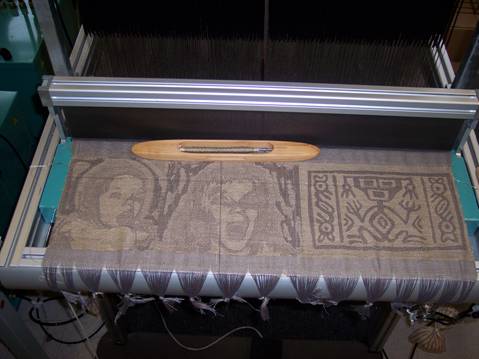
I chose two types of image – one photographs of the grandchildren, one a line drawing of a Mexican pattern taken from a monthly Dover newsletter about their clip art books. To reproduce photographs on a loom, extensive editing is needed – at first in Photoshop (Elements), and then in Jacqcad. The faces were cut out of the larger photo (actually each face is from a different photo), resized to an equal pixel count in height, and put into a single file. The colors were turned to grayscale and reduced – from several hundred shades, to 256 to 128 to 64 – and ultimately to only 16, combining areas to make the lesser number of shades. This makes the images less clear, but provides areas large enough to dedicate to a single weave structure. Using the Jacqcad design software, the photos were further cleaned of stray pixels, some more areas combined for greater clarity, and then edited with a weave structure for each shade. For this image, I chose only satins to keep the appearance as much like damask as possible – using a photo reproduction of structure samples, grading them from light to dark to match the image areas.
The Mexican design was chosen because it represents a pattern which would look lovely in damask, but has too many curves and details to weave on a standard shaft drawloom using units of 4 or more threads. The class template was 360 pixels high, the graphic 355, so there was no need to resize it. Already in grayscale – the number of colors was reduced to 2 – black and white – and stray pixels cleaned. (If the edges had not been pixel cleaned, the appearance would have been ragged. In Jacqcad, there was not a lot that needed doing – I chose 7/1 and 1/7 opposing satins for a traditional damask appearance, letting the colors do the work.
After looking at several colors and textures of yarn (20/2 cotton-black, 16/1 linen blue, 12/1 linen tow, 14/2 cotton-brown) I chose the natural linen – the weight looked correct and the blond hair of our granddaughters would be represented well with the natural flax color.
The design phase lasted a day and a half. Weaving the 360 picks plus a tabby border took just over an hour. The TC-1 is a hand operated loom with solenoids that control each warp end individually using compressed air. A normal handweaver’s shuttle is used. Note the picture of the loom in operation – with my favorite damask shuttle and paper clip weighted temples. It turns out that Pat Williams has the information in a binder for students and has used this method before in other classes. Tension was even, warp material (20/2 cotton at 45 EPI) a good choice, and weaving was quite easy – selvages developed nicely, set to basket weave by the software.
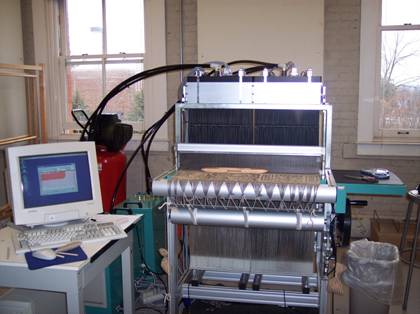
The TC1 with displayed cloth in progress. The PC controls the pick plan – the foot pedal advances the software and the loom by 1 pick each time. There is no bench – weaving is done standing.
 
The original photos, background simplified and colors lightened.

The image copied from Photoshop to Jacqcad showing simplified shaded areas prior to pixel cleaning.
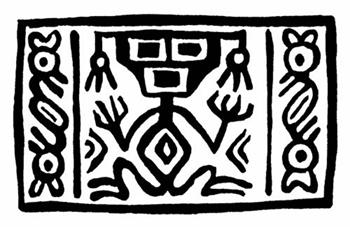
The Mexican graphic at beginning of process. This image didn’t change much – only the edges were smoothed to give a better appearance.
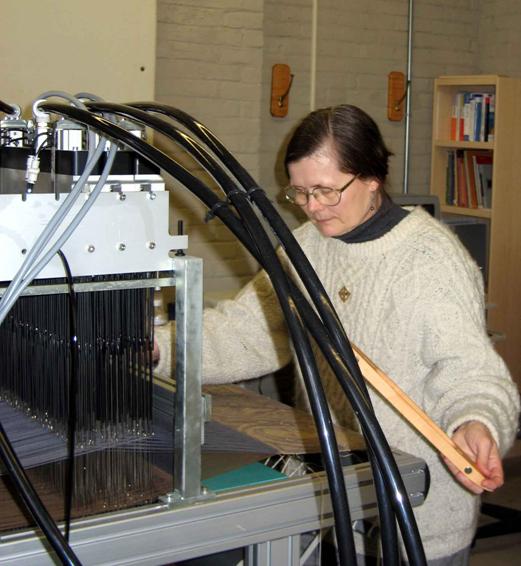
Yes, it is still a handloom – with a bit of technology added.
Each student was allowed a design of 360 picks so that work could be completed on time.
On the next page are photographs of the samples done by the 4 students attending the class.
This is a first class opportunity for handweavers to become acquainted with the techniques used for designing on industrial looms. There are very few other places that offer instruction on either Jacquard weaving or the software used to design for Jacquard looms.
Though it looks easy, this is NOT something for advanced beginners, and the use of computer software does NOT make it an automatic and simple process. The design work for the 360 student picks took everyone there a day and a half or more – the adjustments to the graphics to avoid odd thread combinations in the finished weave and to make the cloth so that it will fulfill its intended purpose are laborious and very detailed. A thorough knowledge of weaving techniques, structures, interplay of threads, and good design is needed.
Certainly a fascinating way to improve one’s understanding of fabric design and construction.
For more information on the TC-1 program, contact:
Eastern Michigan University
Ypsilanti , MI
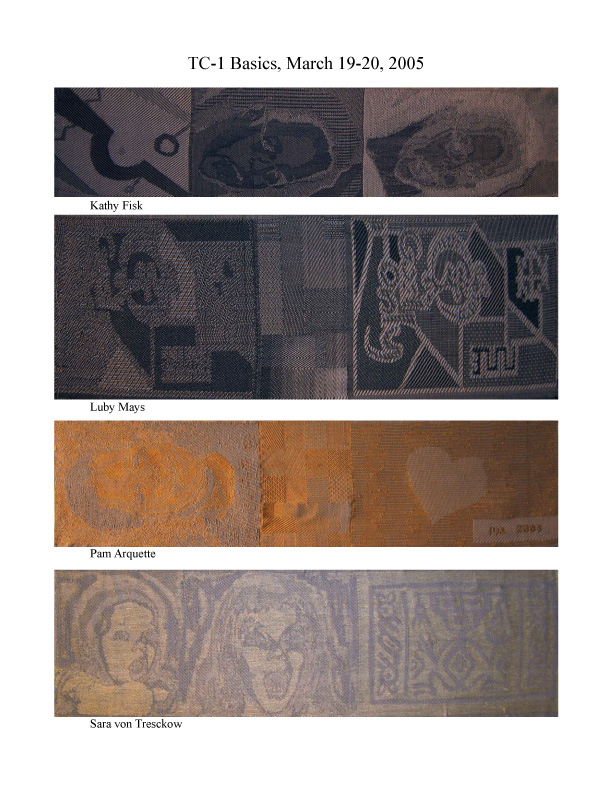
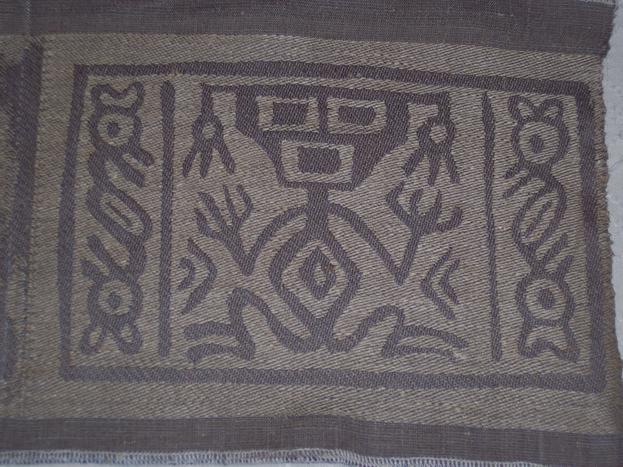
Details ShoDwn Below
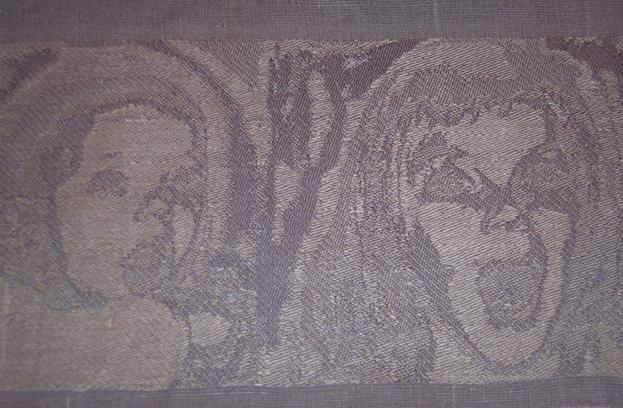
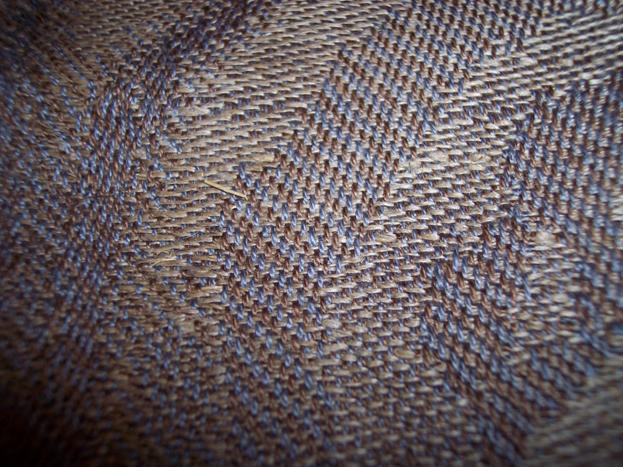
|
